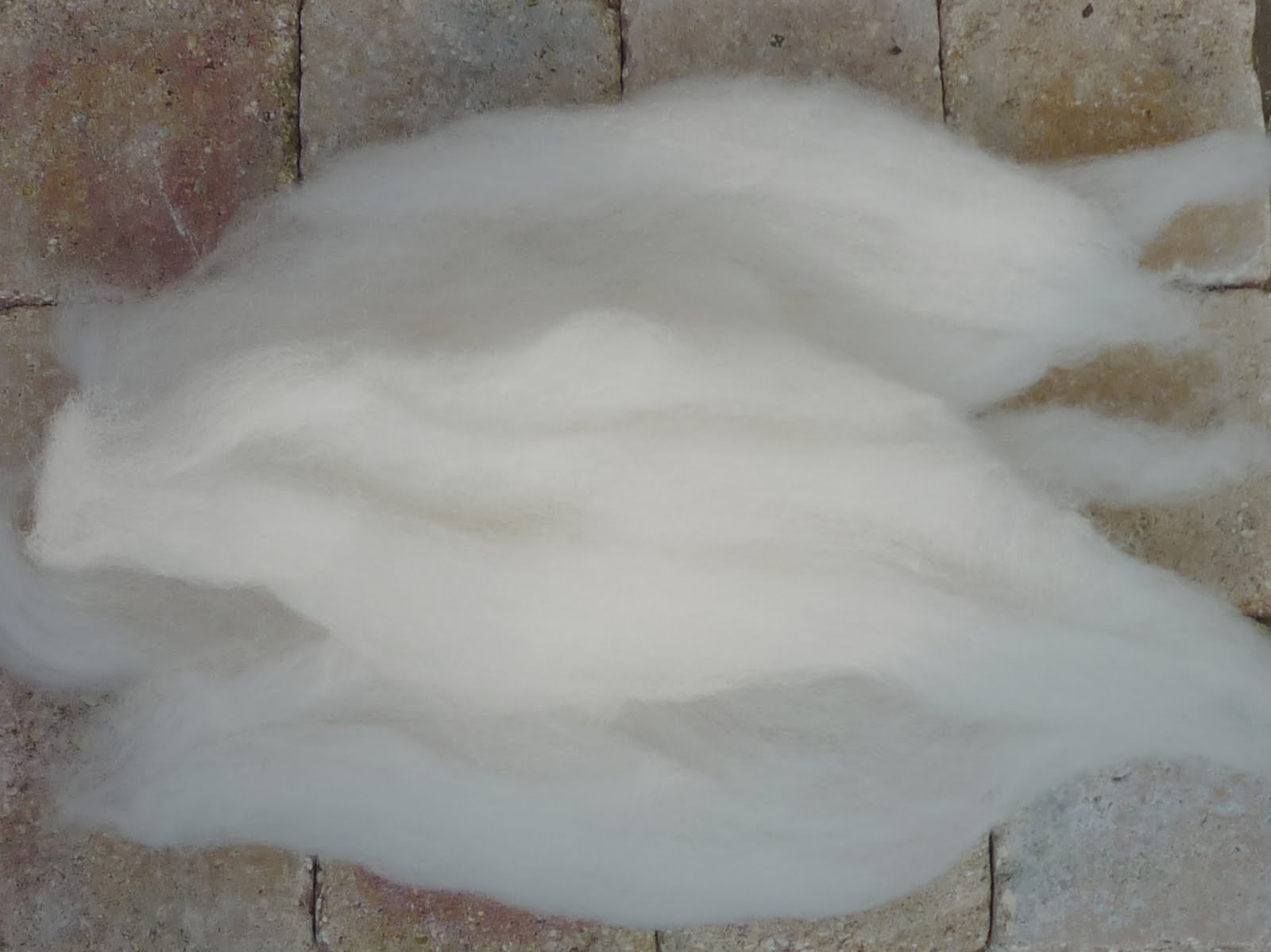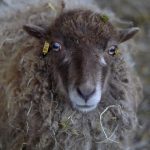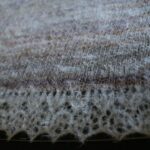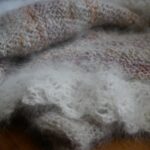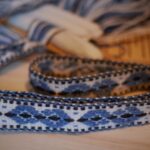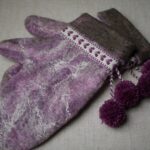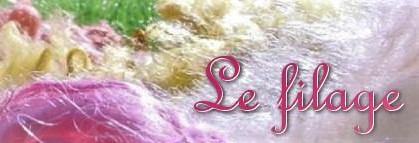De la Toison au Tricot n° 70 : Quand ça colle !
For the past few years, I have been washing my Ouessant fleeces in rain water.
As I have already explained, knowing that suint is water soluble, one only needs to soak a raw fleece in cold water for a few days in order to remove the suint from the wool.
In so far as an Ouessant fleece contains very little lanolin, I’ve been combing and spinning my fleeces just as they are after a nice rain water soak. Up until this time, I’ve never had any problems with this method.
But then … a few weeks ago I ran into a bit of a snag !
I had carefully prepared Caramel’s beautiful fleece last year. I put it aside, as I wanted to spin all of Caramel’s wool from 2010 and 2011 at the same time.
Depuis plusieurs années maintenant, je lave l’ensemble de mes toisons Ouessant dans l’eau de pluie.
Comme j’ai déjà expliqué à plusieurs reprises, en sachant que le suint est soluble dans l’eau, pour l’enlever de la toison il ne faut que tremper la laine brute dans l’eau froide pendant quelques jours.
Dans la mesure où il n’y a que très peu de lanoline dans une toison Ouessant, je travaille la laine Ouessant telle qu’elle est après trempage dans l’eau de pluie. Jusqu’à présent je n’avais jamais eu de problème avec cette méthode.
Pourtant …. il y a quelques semaines j’ai rencontré un petit problème!
J’ai soigneusement préparé la belle laine de Caramel l’année dernière. Je l’ai mise de côté car l’avais envie de filer la laine de Caramel de 2010 et de 2011 en même temps.
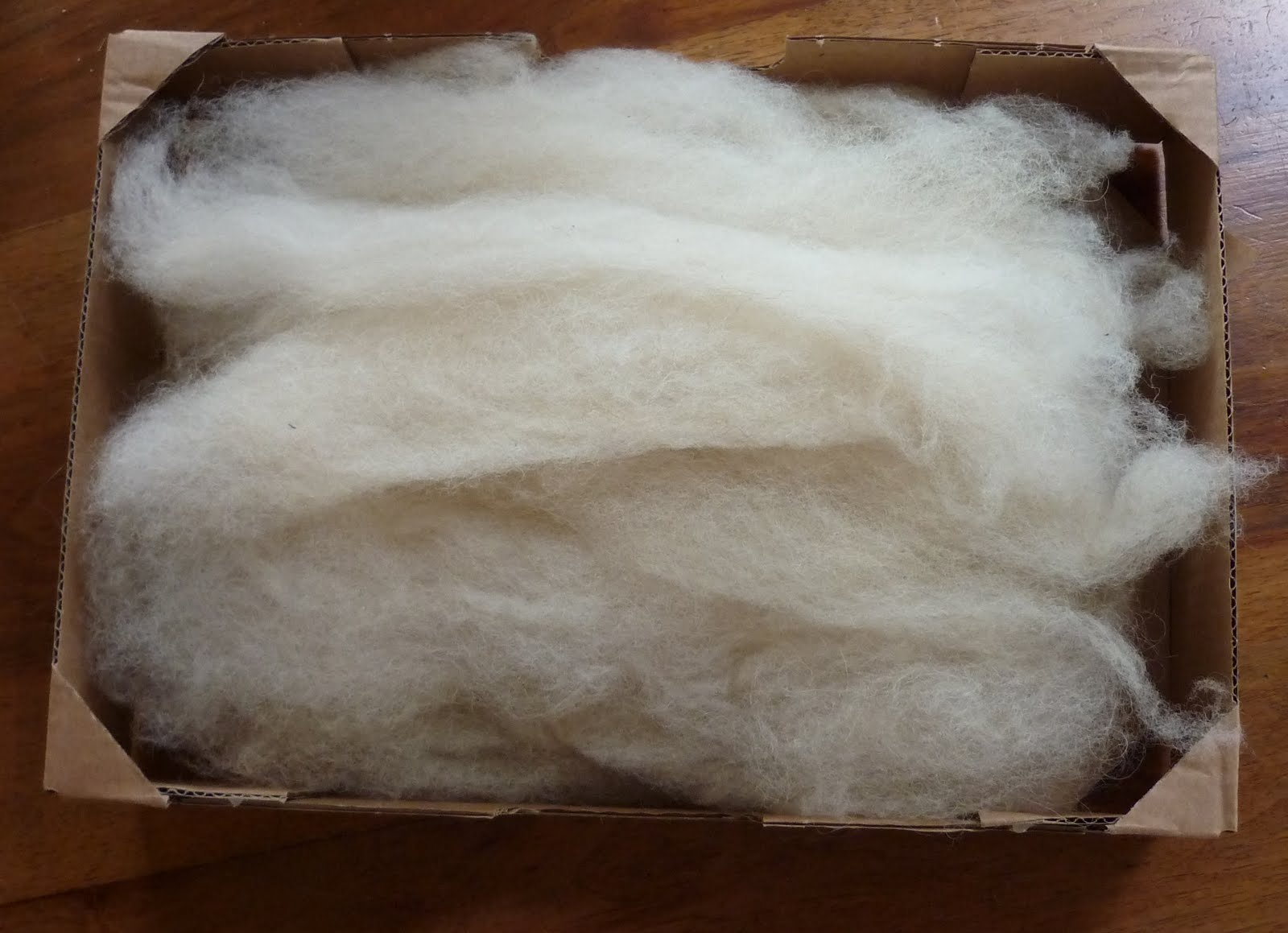
I was really disappointed to see that Caramel’s wool (from last year) was sticky!
Essentially, even though there is very little lanolin in an Ouessant fleece, there is, all the same, some. If not removed from the wool, this small amount of lanolin can oxidize and make the wool feel sticky.
Fortunately, all is not lost!
It’s really essential to understand just what lanolin is and how it can be removed from a fleece. First, even if we often talk about “wool in the grease” when we refer to raw wool that still contains lanolin, it’s important to realize that lanolin is actually a type of wax. In order to remove this natural wax from the fleece we must use heat (at least 140̊ f but not more than 210̊ f) to “melt” the wax and soap or detergent to remove the wax from the fiber and prevent it from reattaching itself to the fiber.
To remove the lanolin from Caramel’s wool, I put his combed wool in a net laundry bag, being careful to keep the fibers nicely lined up.
Quelle ne fut pas ma grande déception quand j’ai constaté que la belle laine de Caramel était collante.
Effectivement, malgré le fait qu’il n’y a que très peu de lanoline dans une toison Ouessant, il y en a quand-même un peu. Et cette lanoline peut, si elle n’est pas enlevée de la toison, s’oxyder et rendre la laine collante.
Heureusement, rien n’est perdu !
Mais il faut comprendre ce qu’est la lanoline et ce qu’il faut faire pour l’enlever de la toison. D’abord, même si nous parlons souvent de la “graisse” quand on parle de la lanoline, il faut savoir qu’il s’agit d’une cire. Pour enlever cette cire de la toison ovine, il faut de la chaleur (au moin 60̊ c mais pas plus que 100̊ c) pour “fondre” la cire et du savon pour éloigner la cire fondue de la fibre.
Pour enlever la lanoline de la laine de Caramel, j’ai mis la laine peignée dans un filet à linge, faisant attention que l’ensemble des fibres reste aligné.
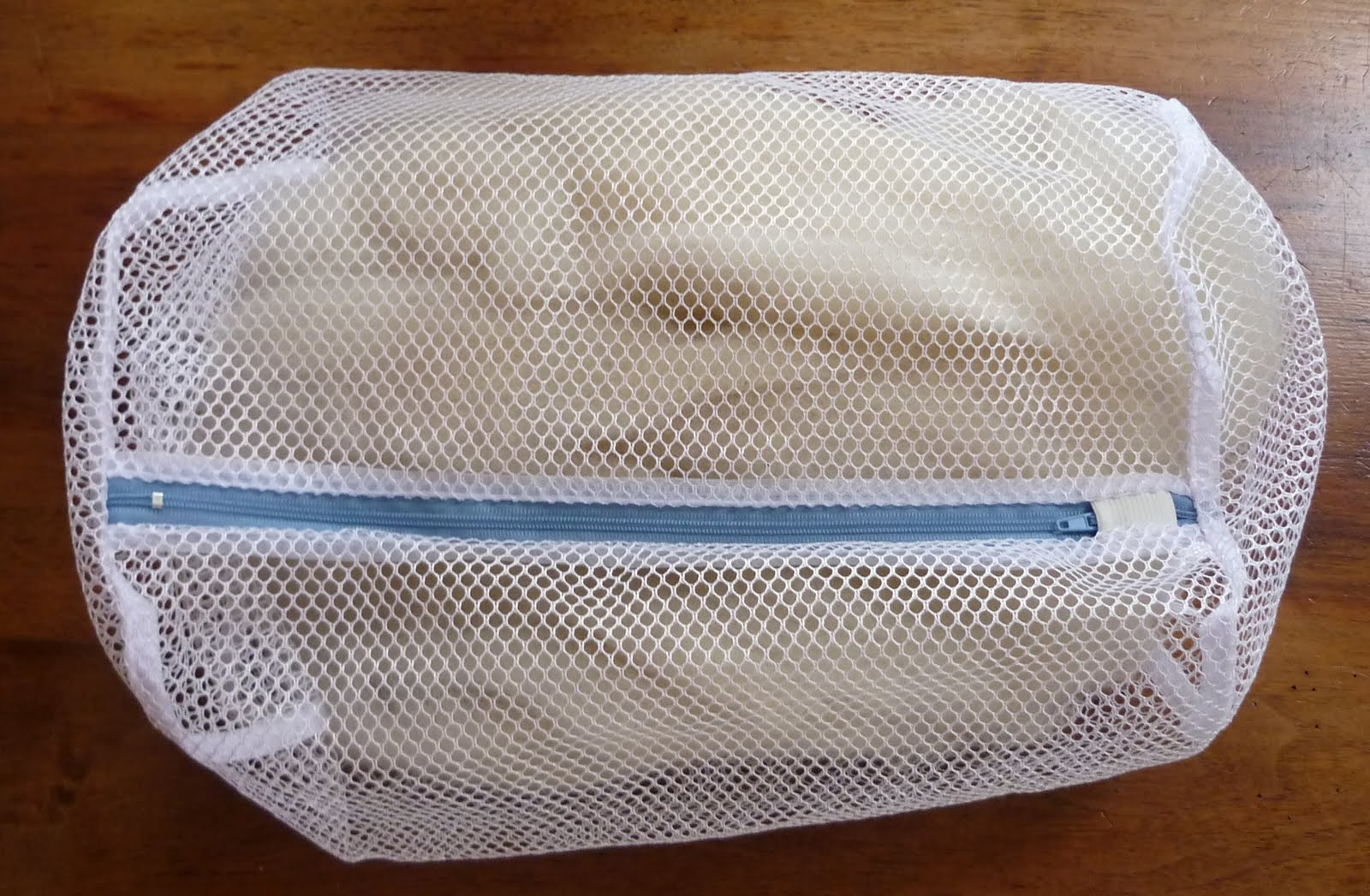
I then gently submerged the net bag full of wool in a sink full of hot water (approx. 170̊ f) which contained a generous amount of liquid dish soap. I let the wool soak for a few minutes.
J’ai doucement plongé le filet de laine dans un évier plein d’eau chaude (environs 75̊ c) avec une bonne dose de liquide vaisselle. J’ai laissé la laine tremper pendant quelques minutes.
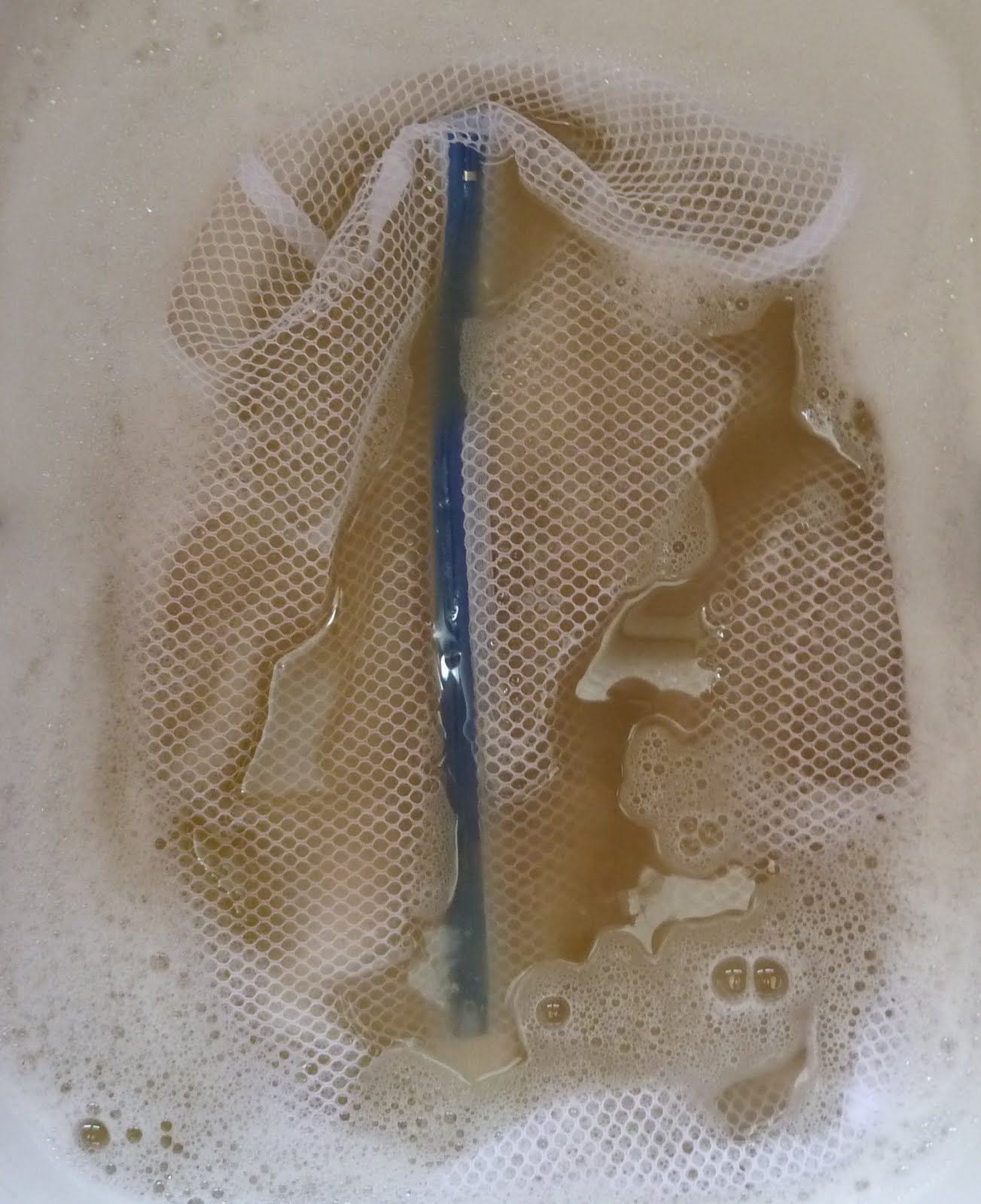
WARNING : It’s very important to not agitate or manipulate the wool … if you do so, you run the risk of felting your wool !
Then I take the net bag out of the hot soapy water and right away put it into another sink that is full of clear water (no soap this time) that is the same temperature as the first sink full of water.
Next, I take the bag full of wool out of the water and gently press the bag/wool with my hands to remove as much of the excess water as I can.
ATTENTION : il faut surtout ne pas agiter ou manipuler la laine … sinon, vous allez courir la risque de feutrer votre laine!
Puis je retire le filet de l’eau et le met aussitôt dans un autre évier plein d’eau chaude claire de la même température.
En suite je retire le filet et avec les mains je presse légèrement la laine pour ôter l’excès d’eau.
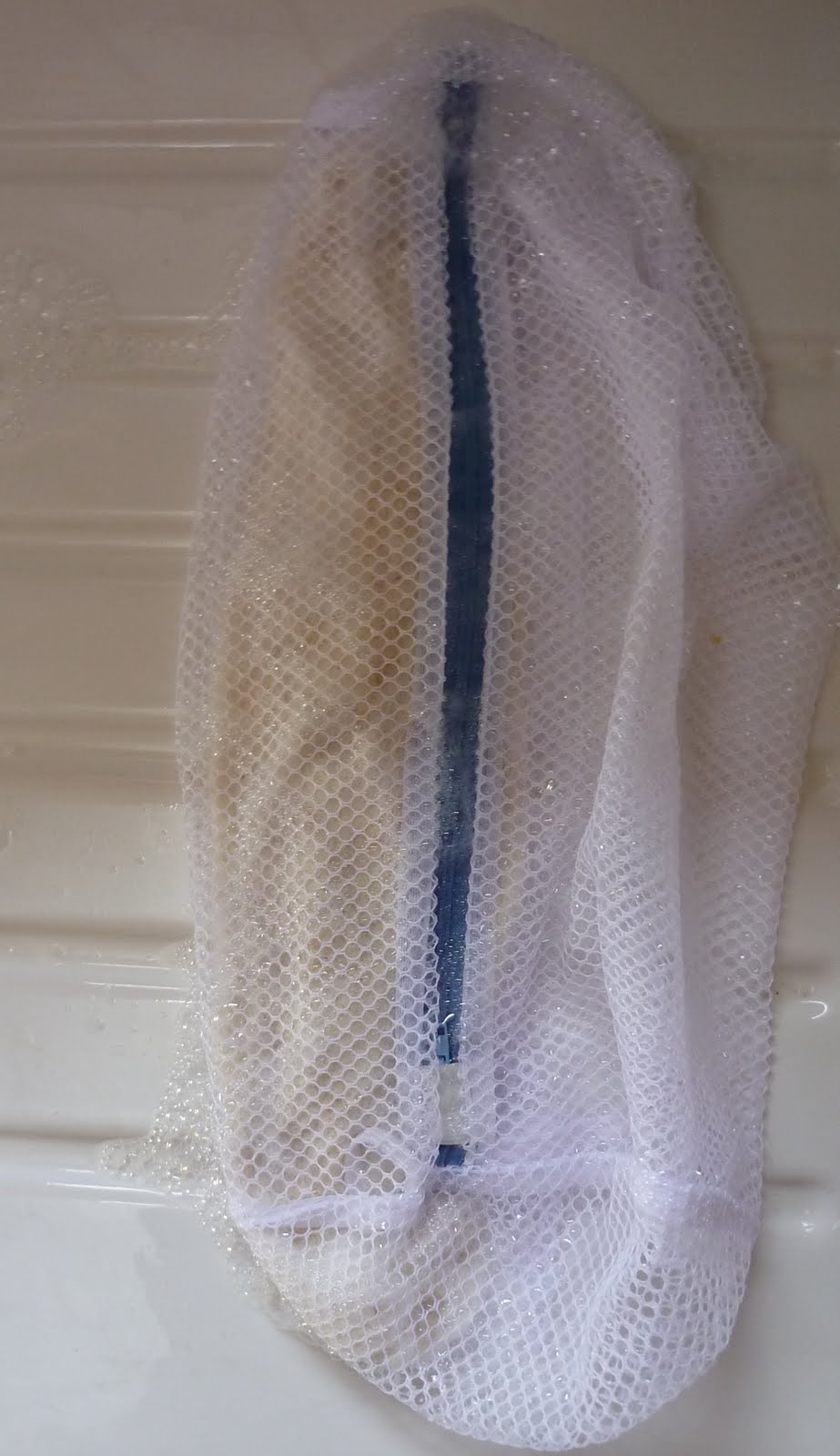
Finally, I take the wool out of the net laundry bag.
Finalement, je retire la laine du filet.
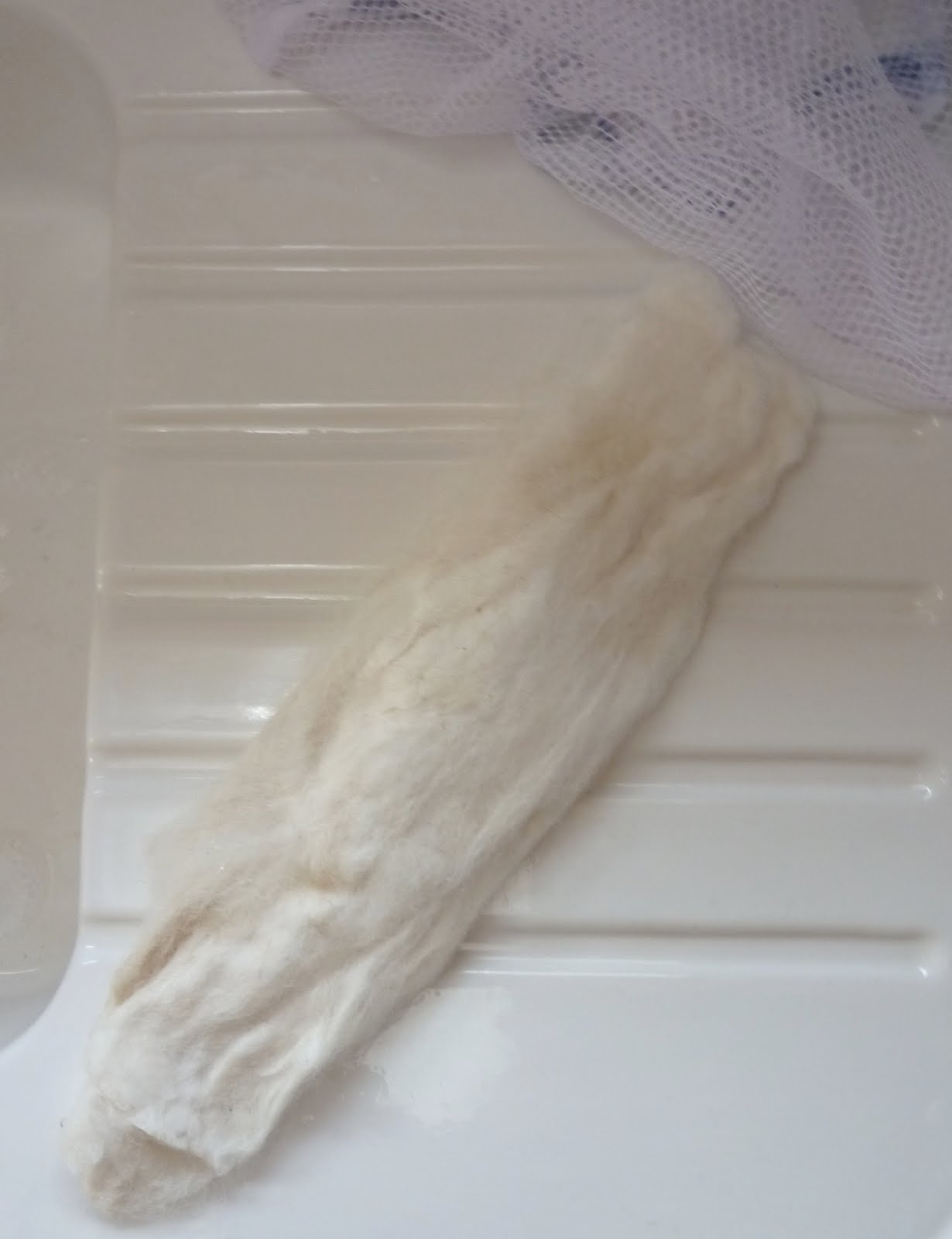
Then before letting the wool dry, I carefully roll it in a towel to press out as much of the excess moisture as possible.
Je la presse dans une serviette avant de la laisser sécher.
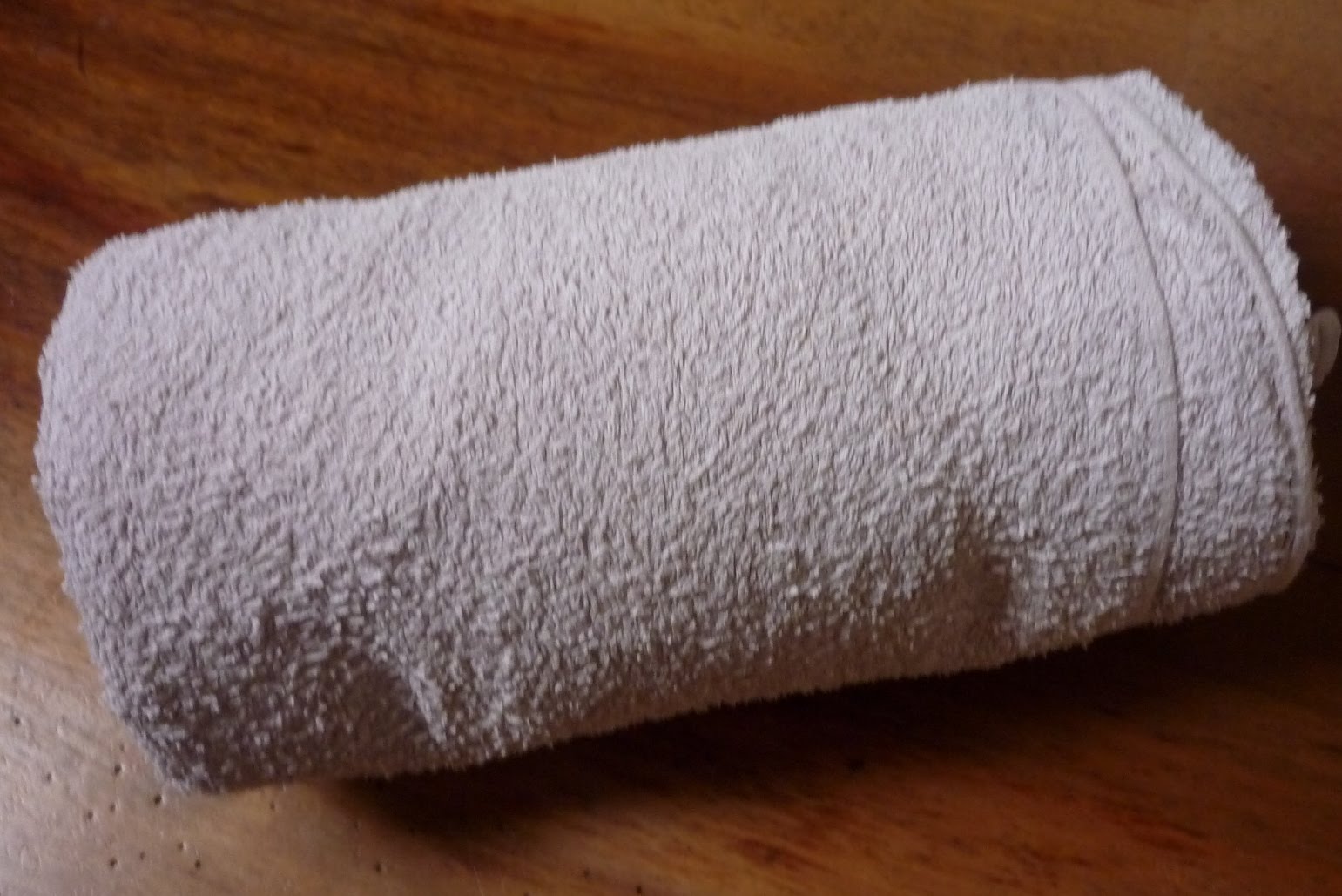
The end result : beautiful clean wool that’s not at all sticky !
Le résultat : une belle laine bien propre qui ne colle pas !
